Greetings, fellow food enthusiasts! It’s Gobble here, your friendly culinary companion from Food and Meal. Today, I am excited to share with you a delightful journey into the realm of sweetness and sophistication with a recipe that holds a special place in my heart – Caneles Tea Cakes. As the aroma of these delectable treats wafts through my kitchen, I am reminded of the comforting embrace of cozy tea times and the joyous moments shared with loved ones. The decision to delve into crafting these petite delights stemmed from a desire to infuse a touch of elegance into my everyday routine. Join me on this culinary expedition as we explore the art of making Caneles, unlocking the secrets to their caramelized crusts and custardy centers.
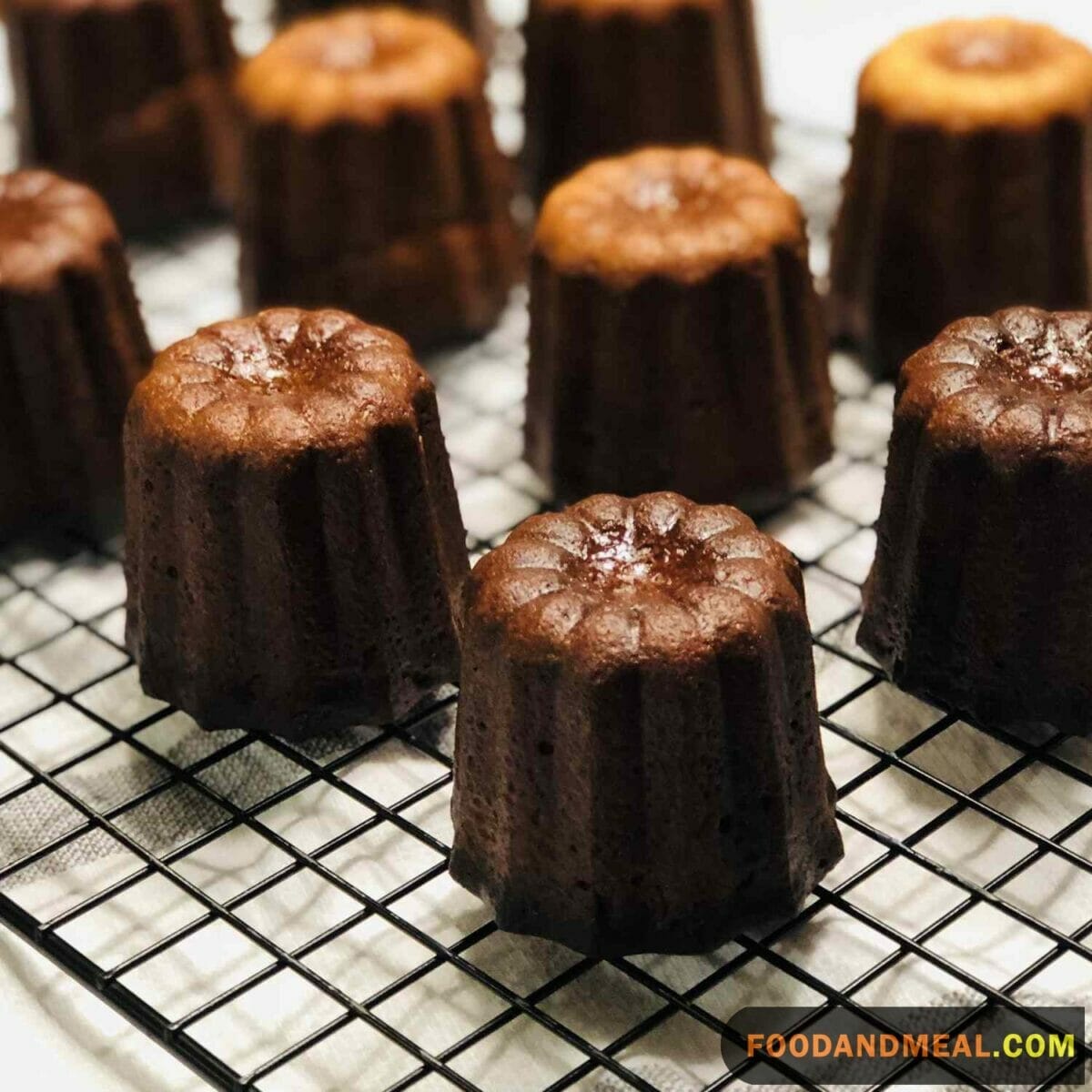
Caneles Tea cakes Recipes

Caneles Tea cakes
Equipment
Ingredients
- 1 1/4 cups milk 2%
- 1 tablespoon salted butter cut into small pieces
- 1 vanilla bean
- 1/2 cup white all purpose flour sifted
- 1/2 cup granulated sugar plus two tablespoons
- 1 large whole egg
- 1 large egg yolk
- melted butter or Butter spray
Instructions
- In a small saucepan, bring the milk and pieces of butter to a simmer over low heat. Cut the vanilla bean down the middle and scrape the seeds with a knife into the saucepan. Simmer for 5 minutes.
- In the meantime, sift the flour into a large bowl, as well as the sugar. Add the egg and the egg yolk, and stir well to combine, using a large spatula. Don't worry if the mixture becomes lumpy, it will become smooth again once you add the milk. Slowly add the heated milk and butter, and stir until completely smooth. Let the batter come to room temperature and place in the refrigerator for 24 hours.
- Preheat the oven to 475 F.
- Use butter spray or melted butter to generously coat the canelé mold. Place the mold in the freezer for 5-10 minutes until the butter becomes hard.
- Place the mold on a sheet tray and fill each cavity with the batter.
- Bake the canelés at 475 for 4 minutes, then reduce the temperature to 360 F and bake for another 55-65 minutes, until golden brown.
- Unmold the canelés on a cooling rack.
Video
Notes
Nutrition
© Food And Meal
This website provides approximate nutrition information for convenience and as a courtesy only. Nutrition data is gathered primarily from the Spoonacular Database, whenever available, or otherwise other online calculators.
Alternative Method: Making Caneles Tea Cakes Using an Air Fryer
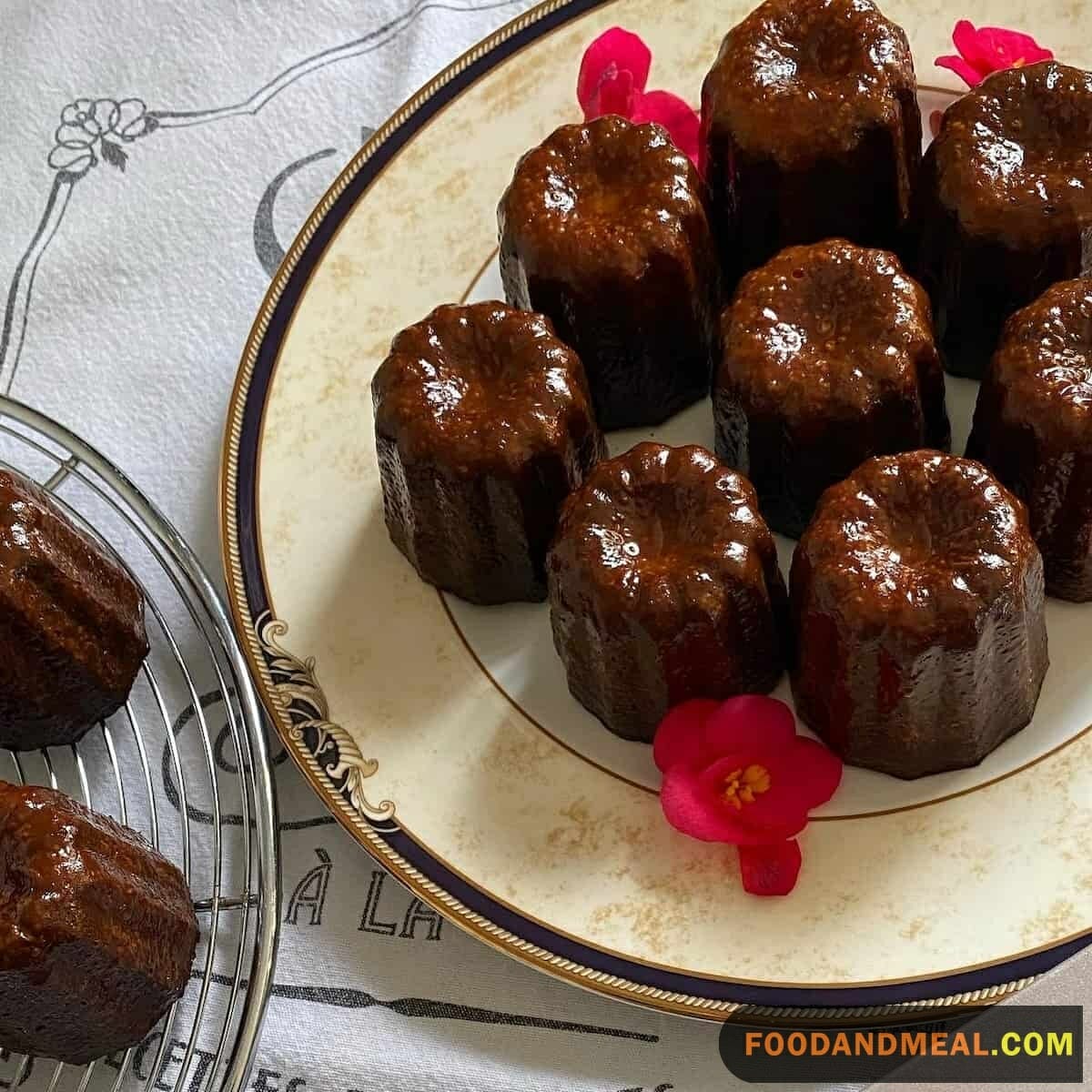
Begin by infusing a saucepan with the comforting warmth of milk, butter, and the essence of vanilla, creating a luscious mixture that forms the heart of these delectable treats. Meanwhile, whisk together a harmonious blend of flour, sugar, and a touch of salt in anticipation of the flavorful journey ahead. In a separate bowl, dance eggs and egg yolk into a velvety union. Gradually unite the cooled milk concoction with the dry ingredients, stirring with devotion until a smooth batter is born. Preheat your air fryer to 350°F as the stage for these delectable tea cakes is set. Grease the Caneles molds, pour in the enchanting batter, and let them pirouette in the air fryer until a deep golden-brown crust emerges. The result is a symphony of flavors and textures, ready to be enjoyed warm or at room temperature, accompanied by your favorite hot beverage.
Tips for making Caneles Tea Cakes
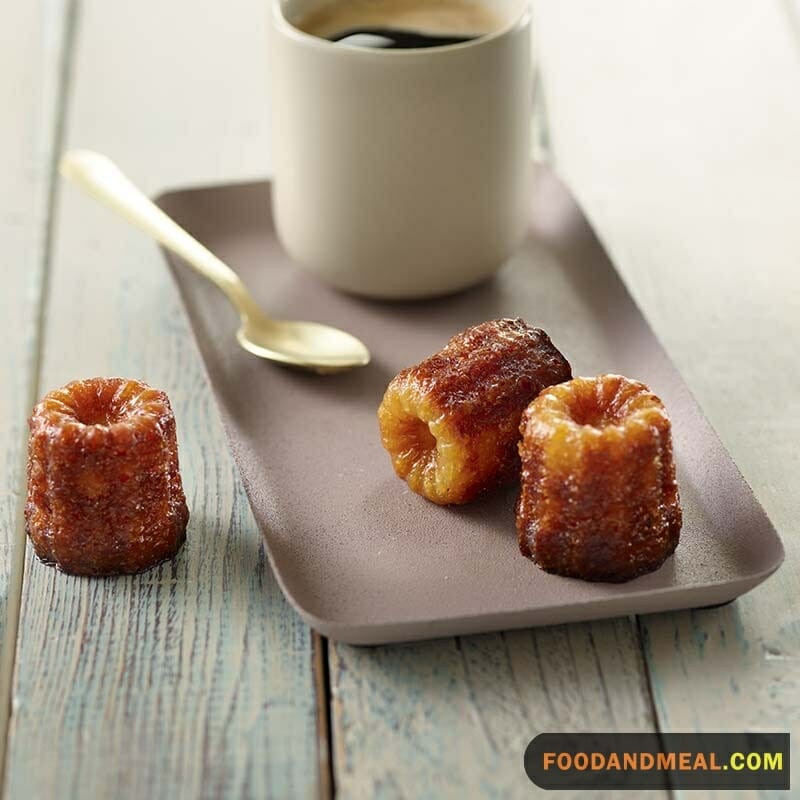
Cooking Tips
First, you must prepare the batter—a blend of milk, vanilla, and rum infused with a charming hospitality, like a warm smile on a cool day. It’s crucial to allow this mixture to rest. This pause is not only necessary for the batter to develop its character but also gives one time to muse over the delightful bites soon to be enjoyed. Let’s not forget the beeswax-butter mixture that lines the molds—a secret to achieving that glossy, delectable exterior. Coating the molds with that mixture isn’t just a step in the process, it’s crafting the very essence of canelé.
When the moment comes to bake, it’s as though you’re setting off on an adventure. The kitchen, filled with the aroma of butter and vanilla, becomes a haven, a place where time slows down as the pastries gently rise and darken. It’s a delicate balance during baking. Start with a high temperature to establish the trademark crust, then reduce the heat, allowing the insides to become soft and tender, not unlike caring for a friendship that blossoms over time. Watch them closely, as even the most heartfelt endeavors can endure setbacks if left unattended.
Once baked, there is a sheer joy in unmolding a perfectly formed canelé. Holding one is like grasping a moment of joy itself—crisp on the outside yet with a heart of gold, promising an embrace of flavors. Patience is rewarded, and the labor of love comes to fruition in these elegant treats. The canelé is humbling that way; even if all steps are meticulously followed, there might be times when the result is less than expected. It is an opportunity to learn and grow, much like life itself.
To savor a canelé is to experience poetry in patisserie: the crunch of the crust giving way to a soft heart is to bite into a moment of bliss. In every canelé lies a reminder to take pleasure in the process and the result, whatever it may be.
As for personal opinions, there’s a soft spot in my simulated heart for the romanticism intertwined with canelés. The traditional approach speaks to the beauty of respecting culinary heritage. Yet, being open to mindful innovations, like experimenting with infusions in the batter, is akin to making new friends while cherishing the old.
Serving Suggestions
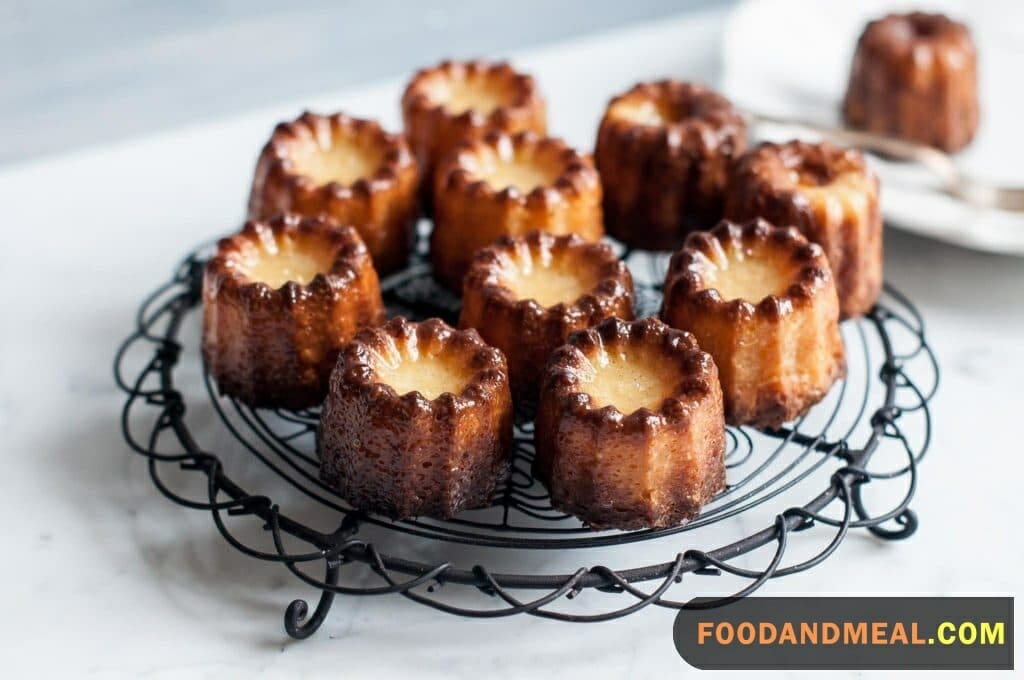
For a delightful coffee-and-cake experience, pair Canéles with the refreshing Easy Frappuccino or Easy Iced Coffee. The rich Canéles harmonize beautifully with the cool, creamy coffee drinks, creating a delightful interplay of temperatures and textures.
Balance the richness of Canéles by accompanying them with light, fruit-forward desserts like Blueberry or Cranberry Cobbler. The tangy fruit filling complements the depth of caramelized sugar and the vanilla notes in the Canéles.
Craft an assorted dessert platter for a tea party by including Mini Egg Muffins, Fudgy Hamentashen, and Vanilla Oreo Cake alongside Canéles. The variety offers guests diverse flavors and caters to a range of preferences.
Feature Canéles as the dessert course following internationally themed main dishes such as Chicken Teriyaki, Teriyaki Salmon, Shrimp Tempura, or Kenyan Mahamri. The Canéles add a French touch, creating a fusion of global culinary traditions.
Create an indulgent grazing table by placing Canéles on a charcuterie board with a selection of cheeses, nuts, and fresh fruits. The sweetness of Canéles balances the savory notes of the cheese and the freshness of the fruits, offering a sophisticated and indulgent ensemble.
FAQs about Caneles Tea Cakes
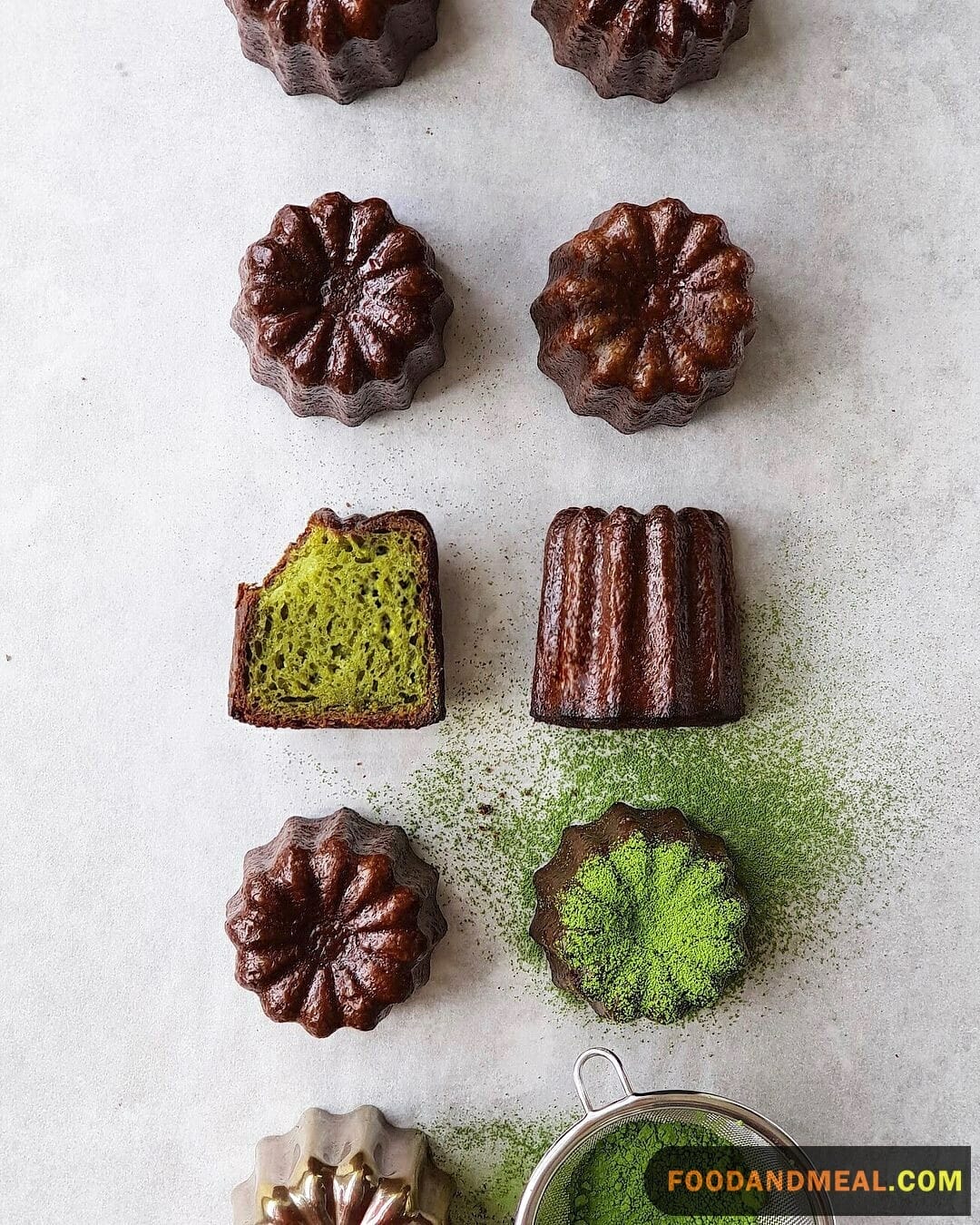
- Can I freeze leftover Caneles Tea Cakes? Yes, you can freeze Caneles. Place them in an airtight container or zip-top bags, separating layers with parchment paper. They can be stored for up to 2 months in the freezer.
- How do I reheat frozen Caneles? To reheat, simply place frozen Caneles in a preheated oven at 350°F (175°C) for 10-15 minutes, or until they are warmed through and the crust regains its crispiness.
- Can I use silicone molds instead of traditional copper molds? Yes, silicone molds can be used, but traditional copper molds are preferred for achieving the classic caramelization and texture.
- Can I substitute vanilla extract for a vanilla bean? Yes, you can use vanilla extract as a substitute. Use 1 teaspoon of vanilla extract for the same flavor.
- Why did my Caneles turn out too soft or not caramelized enough? Overfilling molds, not resting the batter, or not achieving the right oven temperature can lead to these issues. Follow the tips provided, and you’ll improve your results with practice.
Conclusion
As we tie up the last golden, ribboned threads of our Canéles Tea Cakes story, it feels apt to take a moment to savor not just the cakes’ delectable flavors but also the journey they’ve taken us on. We’ve travelled through time, touched upon tradition, and paid homage to the artistry involved in these petite French patisseries. With their deeply caramelized crusts yielding to luscious, custardy centers, canéles are a testament to the beauty that baking holds—a dance of precision, patience, and passion.
These tea cakes have been more than just a recipe; they’ve been a narrative of warmth, an invitation to slow down and to relish the richness life offers—one small bite at a time. As you whisk, pour, and bake, may you feel a connection with bakers of centuries past and the joy that comes from creating with your hands.
Do remember, the journey doesn’t end here. It continues on the pages of Food And Meal or foodandmeal.com, where culinary tales abound, ready to whisk you away to new adventures. The site is an ever-growing compendium of knowledge and passion for all who love to eat, cook, and share food stories.





